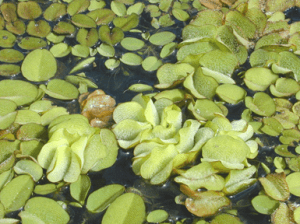TAG: GS 3: ECOLOGY AND ENVIRONMENT
THE CONTEXT: The successful eradication of the invasive aquatic weed, Salvinia molesta, from the Sarani reservoir in Satpura dam, Madhya Pradesh, showcases a significant breakthrough in biological control methods using exotic insects.
EXPLANATION:
- This effort has not only restored the aquatic ecosystem but also revived the livelihoods of local fishing communities.
- The Madhya Pradesh Power Generating Company Ltd., which manages the reservoir, initially considered manual removal.
- However, this method was estimated to cost around Rs 15 crore and deemed ineffective due to the high likelihood of the weed’s resurgence.
Introduction of Cyrtobagus salvinia
- In April 2022, the Indian Council of Agricultural Research-Directorate of Weed Research (ICAR-DWR), in collaboration with the company, introduced Cyrtobagus salvinia, a Brazilian beetle that specifically targets Salvinia molesta.
- This initiative followed thorough research and governmental approvals.
- Within 15 to 18 months, Cyrtobagus salvinia eradicated Salvinia molesta from the 2,800-acre Sarani reservoir.
- This achievement was labeled a “scientific marvel” by the chief engineer of the power company.
- The success at Sarani reservoir was built on a successful trial in Padua village, Katni district, where Cyrtobagus salvinia eradicated the weed from a 20-hectare pond within 18 months.
Environmental Impact and Benefits
- The beetle, which exclusively feeds on Salvinia molesta and dies off once the food source is exhausted, poses no environmental threat.
- Its introduction has led to significant ecological restoration in the affected areas.
Socioeconomic Impact
- The elimination of Salvinia molesta has had profound positive impacts on local fishermen who had been struggling due to the weed infestation.
- Optimism for the future has been expressed as fish populations are expected to rebound with the clear waters.
- A former chief scientist at ICAR-DWR, recommended a release density of 22,500 insects per hectare for optimal results within 15 months.
- This method is highlighted as cost-effective and environmentally friendly.
Salvinia molesta
- Salvinia molesta, commonly referred to as “Chinese Jhalaar” locally, is an invasive aquatic fern that poses severe threats to water bodies by forming thick mats, depleting oxygen, and obstructing sunlight.
- It was first identified in the Sarani reservoir in 2018 and had completely overrun the area by 2019.
- It is a free-floating plant that does not attach to the soil, but instead remains buoyant on the surface of a body of water.
- The fronds are 0.5–4 cm long and broad, with a bristly surface caused by the hair-like strands that join at the end to form eggbeater shapes.
- They are used to provide a waterproof covering. These fronds are produced in pairs also with a third modified root-like frond that hangs in the water.
- It has been accidentally introduced or escaped to countless lakes throughout the United States, including Caddo Lake in Texas, where the invasive species has done extensive damage, killing off other life.


